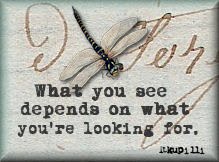This is a behind the scenes peek into the decorating process for the Pasadena Tournament of Roses Parade floats.
Volunteering my skills to decorate the Roses Parade Floats, has truly been one of my favorite family holiday traditions.
Traditionally, the decorating of floats is done in the week that follows Christmas. This is a short
time period that challenges float building companies to finish a lot of work in a very short time span. This is only accomplished by the commitment and hard work of hundreds of volunteer float decorators who apply their skills to create the wonderful floats you see during the Rose Parade. If you are interested in contributing to this amazing process, you can find out volunteer information through the Rose Parade website link and/or through the Petal Pushers organization. The Petal Pushers
 |
| Petal Pushers volunteers decorating floats |
 |
| 2012 Lions Club Intl Tournament Rose Parade Float |
of the most breath taking pieces of floral art. It is hard to appreciate their true beauty just by seeing them on the television. They make a very different impact on viewers when seen in person. Every visible area of the float is covered in either flowers, seeds, spices, herbs and other organic materials. Below are two sample posters of the various organic materials that are used on the floats.
These are all hand applied by the decorators and volunteers. In picture below, these materials were applied to create the drawing.
This process is similar to those old fashioned sand painting sets that one can find at the craft supply store. A good example of how to do this process is the use of dried split peas.
They are individually hand applied to the base form,
using adhesive, to create dimension on the float.
As you can see in this dinosaurs face.
We also used Brussels sprouts that were split in half and glued onto the form to create scales.
Every flower that comes goes through a process. Then the volunteers begin the processes of gluing wooden sticks to the stem of each bud.
Once the adhesive is dry, each carnation bloom is then carefully hand fluffed by the volunteers
and then put onto Styrofoam base to be lined up by color and type of flower. Delicate flower and roses are kept fresh by being placed in individual water filled vials.
Then they are labeled to be placed onto the float in accordance with artist diagram directions.
Once they are labeled, the flowers are lined up next to the float they are going to be placed on. This
allows the volunteers to begin the process of placing the flowers onto the floats, one by one. So you can literally watch the float going from this:
to this in just a matter of a few days. The large flower pieces are removed and placed back onto the float once the lower area is prepared.
Once again, every part of the float is covered by flowers, leaves, stems, seeds, and other natural materials. The organic materials used to cover the float signage can vary from seed, spices, crushed flowers, and fresh flower petals.
 |
| White carnation petals for covering the City of Glendale 2012 Rose Parade Sign |
 |
| Pink Carnation Petals for covering giant flower forms |
 |
| The Carnation Petals after being adhered to the floral form |
This is a view of how the decorated floral form looks once it has been loaded onto the float.
The flower petals are adhered to the surface by a process of using individual flower petals
which are glued onto it one-by-one by the volunteers.
The delicate petals must be glued with care to not damage the petal. Below are Iris petals which are being used to create a faux stitched effect.
This is slow and sticky process. The glue has to be strong enough to hold the petals onto the signage throughout the parade route without damaging the petals (so they look good for the parade).
We usually end up with glue all over our hands and clothing, most of the seasoned volunteers will advise new volunteers to wear their oldest clothing (since it will probably get trashed during the float decorating process). Additionally, we glue seeds, dried orange slices, and other natural materials to various surfaces
You can see how tiny the natural materials used in the process can be. Each seed has to be attached with the adhesive.
More examples of various materials used.
The miniature building in the photo below, is composed of seeds, beans, flowers and other natural materials.
Here is a look at some of the different floats and the cool features you may not get to see when you watch the parade on television.
 |
| 2012 Odd Fellows & Rebekahs Rose Parade Float |
On the Odd Fellows & Rebekahs float they had a memorial garden.
 |
| 2012 Odd Fellows & Rebekahs Rose Parade Float Memorial Garden |
The Stag was decorated in grasses and other organic materials which gave it the fur effect.
The Shriners Hospital for kids 2012 Rose Parade float was such a fun float.
The Farmers Insurance Group also had some amazing details on their float.
Seeing these amazing works of art emerge from their beginning stages to end product is an amazing experience. Volunteering to decorate these floats can be fun. Time just seems to just fly by as you watch the floats change with each new floral addition. You get to meet new friends and learn new skills. If you live in or are visiting California, I highly recommend checking out the Rose Parade Float display which sets up at the end of the parade route on January 2. It is worth the traffic and parking challenges to see these floats in person.



















































